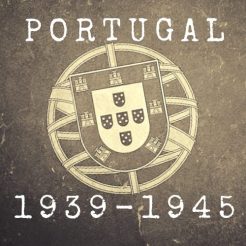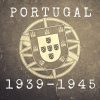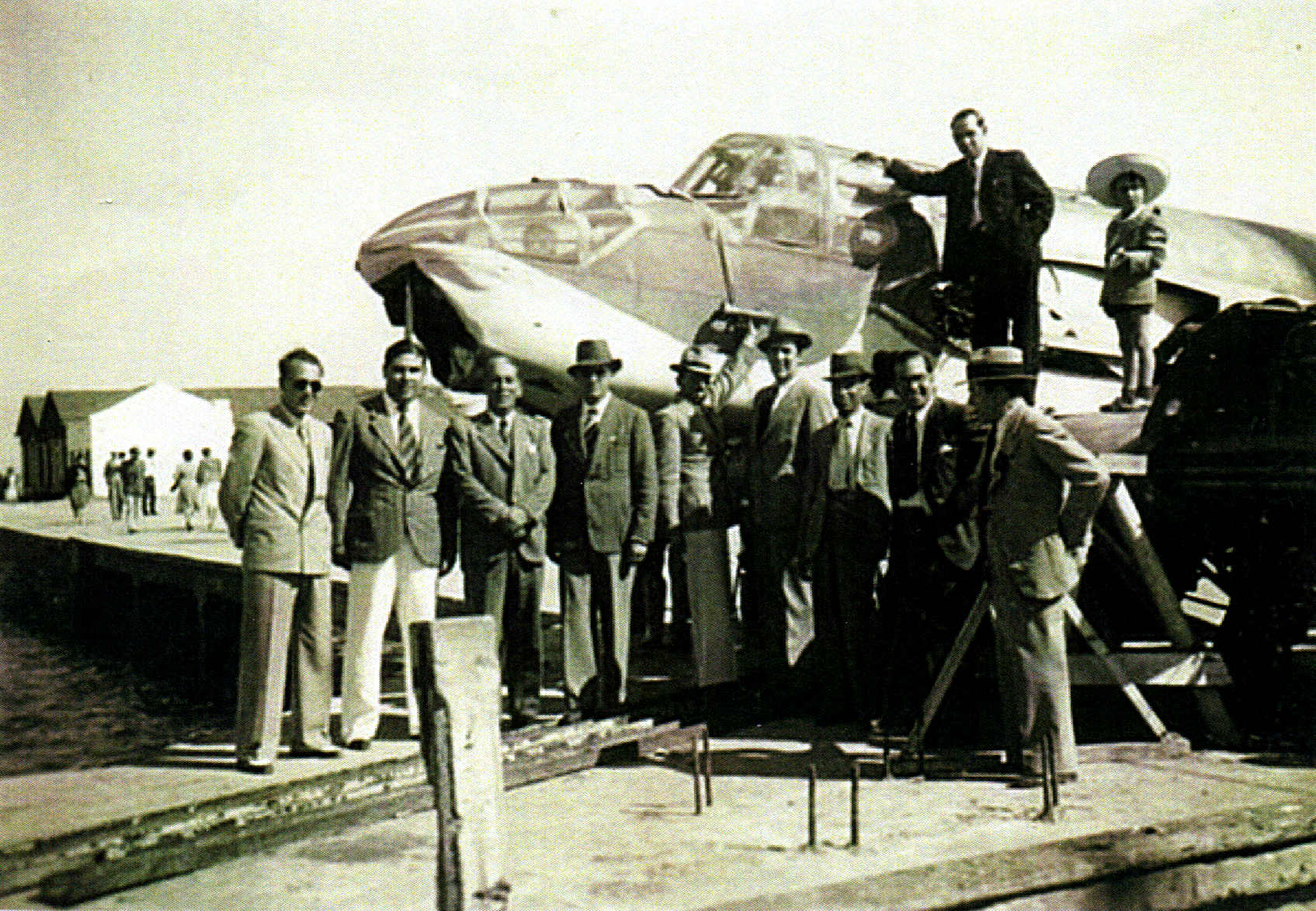
The plane became one attraction for the population of the islands and the surrounding area
(Picture offered by Alm. Luis Roque Martins)
Date
Location
Force
Aircraft
From-To
Crew
17-07-1941
Cabo de Santa Maria - Faro
RAF OADU
Bristol Blenheim IV Z7366
Portreath (GB) → Gibraltar → Malta
F/Sgt. G.K. Williams NZ
Sgt. R.E. Griffin GB
Sgt. N. Kay GB
The plane left Portreath base base at 12:20 am of July 17, 1941, bound for Luqa, in Malta, with three other planes from the same squadron.
As the support of the auxiliary pump broke it was forced to make an emergency landing because they could not transfer fuel from the secondary tanks to the main ones. The landing took place near Cabo de Santa Maria, near Faro, south Portugal, on one of the islands in the Ria Formosa.
The crew was repatriated on July 31, 1941 on the ship Briarwood which left the Tagus river bound for Gibraltar. On 16 August the three men arrived at the base of 105th Squadron at Swanton Morley.
in September two mail bags destined for Malta were returned by the Portuguese to the British Embassy in Lisbon.
On the other hand a strange yearlong began for the Blenheim.
On the 18th of July, Captain Carlos da Costa Macedo landed on the island of Santa Maria, in a Tiger Moth biplane from the Portuguese Aeronáutica Militar (Army Aviation), to carry out an inspection of the aircraft, that had some problems. In the final phase of the landing the wheels became buried in the sand and it reared. “As a result, the nose of the fuselage was badly damaged and the two propellers bent, slightly on the right engine and more pronouncedly one blade on the left engine”, explained the officer in his report.
Despite this damage, the pilot considered that it was in excellent condition and that it deserved to be recovered.
In addition to checking the condition of the plane, Costa Macedo was also tasked to study the conditions under which the plane could be removed from the island. One possibility was to take off directly from the beach, but that meant repairing the propellers at the aircraft workshop in Alverca, at the OGMA’s, but he stated also that ground was far from ideal to lift that six-tonne machine.
From the different hypotheses, it was decided to use the Portuguese hydrographic ship Almirante Shultz, with a cargo pole capable of lifting 15 tons, to take it directly to Lisbon across the stern.
In September members from the OGMA arrived at the site to dismantle the Blenheim. The operation lasted about a month and everything that was transportable - including the engines - went by train to Alverca.
At the beginning of October, the fuselage was still on the beach, guarded by Fiscal Guard privates who stayed there for 12 to 24 duty hours, as the nearest post was more than four kilometers away. The local command complained, moreover, not only about the increase in expenses but also about the lack of personnel, asking for the surveillance duties to be suspended.
On thick wooden beams the Blenheim was transported to the pier off the Port Authority, waiting for the arrival of Admiral Shultz, who was finishing a beaconing service in the area that would be completed within two to three weeks.
At this point, the British offered the plane to the Portuguese, asking “only that provisions should be made for it to be destroyed if enemy forces occupied Portugal”.
On November 5th, the General Command of the Military Air Force insisted that for the Ministry of the Navy to carry out the transport as quickly as possible “in order to avoid that the action of time due to excessive delay could damage the equipment”.
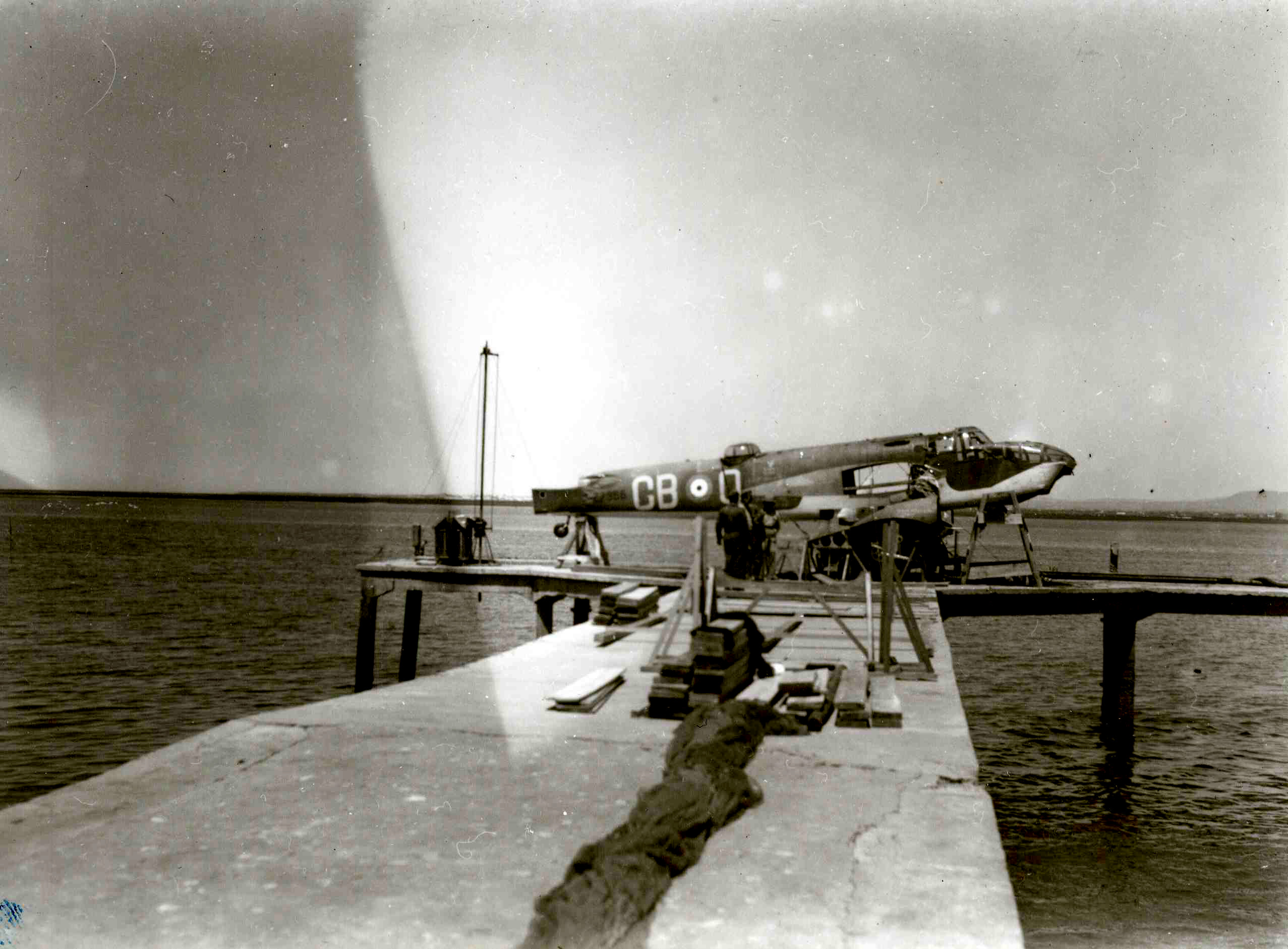
The Blenheim at the Pier
(Picture offered by Rosa Neves)
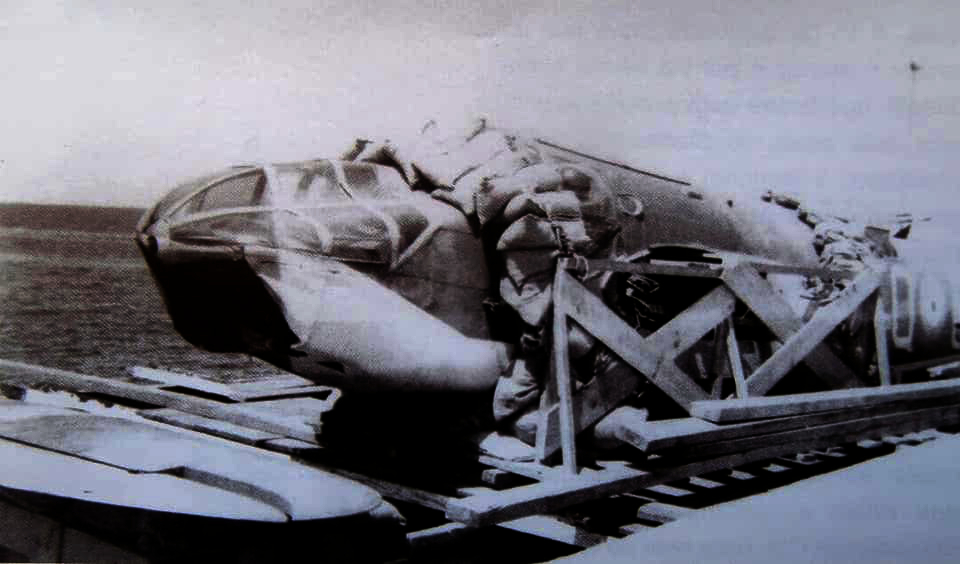
Front of the Blenheim with signs of the accident
(Picture offered by Rosa Neves)
In a response note signed by Captain of sea and war Américo Tomaz - future President of the Republic - it is explained that “the fuselage can only be transported crossed over the stern of the ship; it is only 2 meters high over the sea and the plane must exceeds it (…), this extension remaining outside the ship would be subjected, with the balance, to touch the water which would mean immediate unusability of it , in whole or in part”. Bearing in mind that it was the end of November, they could not assume responsibility for the success of the transport and suggested getting a large barge that could be towed to Lisbon or storing the plane in one of the hangars at Culatra until the weather allowed the operation to be carried out.
In December the OGMA sent again “competent personnel to deal with the removal of the plane's fuselage (…) by rail”. The fuselage was separated into more components to facilitate transport, but after the work was done it was realized that without a crane or a way to build one on site it would be impossible to move all the parts. Thus, the solution of transport by the Almirante Shultz was reassumed, which now, due to the fact that the volumes were smaller, would become easier.
In the following months correspondence continued to be exchanged in order to assure transportation. Already in July 1942, a new report prepared by an other aeronautical officer referred that the “material is generally covered with rust”. It is also clarified that the Almirante Shultz “is still under repair, which leads us to conclude that it will not be able to transport the material in the near future”. With this in view he suggests to prepare a transport by any means possible. This suggestion was taken seriously because on July 15, it is known that the “Blenheim is already at the OGMA’s Workshops, in Alverca”.
The aircraft was recovered and became number AM 262 in the Portuguese Aeronáutica Militar. It would be destroyed during a forced landing on the banks of the Tagus River on 12-08-1944.
Memories of an airplane
As in other parts of the country, the plane became an attraction for the population of the surrounding area and the fact that it remained on the pier during all those months further accentuated its characteristic of a “touristic” hub. After all, it was a way to see the war closely.
The photo at the top of this article was taken during one of these group visits. On the wing and wearing a hat is the now Admiral Luís Roque Martins, who was also the one who kindly offered us the image.
The group had crossed the estuary in a boat owned by their grandfather, the shipowner José Roque, and who was also responsible for organizing the excursion where, in addition to other family members of Luis Roque Martins, such as his father - Aníbal -, there is also doctor Arnaldo Vilhena, a very prestigious medic at the time.
Rosa Neves, who lives in one island called Hangares, was also interested in the planes that crashed in that area and in 2017 she spoke with Jaime Inácio Brito, a retired teacher born in 1929, with a very lucid memory about the Blenheim and others cases.
When he learned that the plane had landed at Cabo de Santa Maria, he and his friends paid 5$00 (escudos) to the owner of the boat "Chora Meninos" who took them there. A second time they went there, they boarded another boat, but then they had to row.
They also took pictures. In one of them, the kids put themselves in a shotgun position in front of the plane, but the elements of the Fiscal Guard did not find it funny and pushed them away “saying that they were like silly cowboys”.
Unfortunately, he couldn't remember where he had the photographs taken that day.
Jaime Brito also remembered seeing the Portuguese start one of the engines, but the plane jumped back and it stopped. He further told that to put the plane on a “black barge” they used ropes, hydraulic jacks and many other equipment because it “was heavy as hell”. In Faro, the plane was placed on a truck that transported it to Lisbon.
Carlos Guerreiro
Sources:
"Royal Air Forces Bomber Losses in the Middle East and Mediterranean" - David Gunby & Pelham Temple § Evade & Escape Report - National Archives/ London Kew § "Battle-Axe Blenheim's" – Stuart R. Scott (information sent by D.Smith. §. Alm. Luis Roque Martins § Rosa Neves
